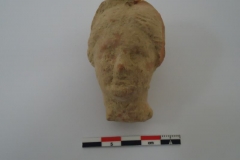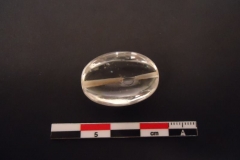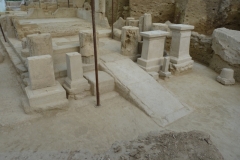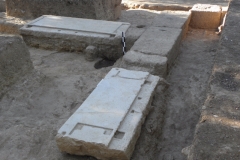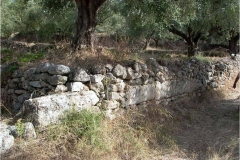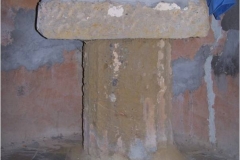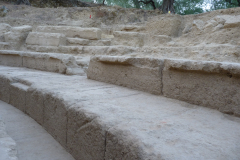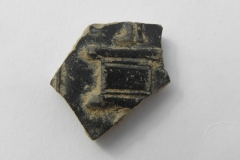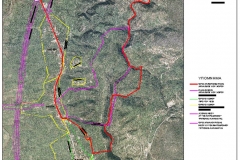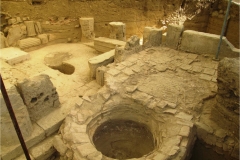The “polyrrhenes” and “polyvoutai” inhabitants of “vathyleimos” Antheia, as they are referred to twice in the Iliad (I, 151, 293), belonged among the wealthy Messenians who were forced to abandon their territory after the end of the 1st Messenian War. The Lacedaemonian conquerors settled in the area during the last quarter of the 8th century B.C. and it seems that since then the new name “Thouria”, meaning settlement’s peak, started to displace the Mycenaean toponym.
In the classical period Thouria became a “perioikos” polis, since the Messenian inhabitants that were loyal to the Lacedaemonians enjoyed certain privileges over the other Messenian subjects (helots). During the earthquake of 464 B.C. the inhabitants of the city attempted to free themselves from the Spartans: they allied themselves with the Messenian helots and found refuge at the fortified Mt. Ithome. They were eventually defeated by the Spartans and were subsequently forced to flee Messenia and settle to Nafpaktos with the aid of the Athenians.
After the foundation of Messene in 369 B. C., Thouria became a member of the free Messenian state. In a very important decree, inscribed on a stele (stone slab) which has inscriptions on both sides and which was found in Thouria, the borders of the territory of Thouria with those of Megalopolis are being determined under the arbitration of the city of Patras. (FIG. 18) The stele is dated to the 2nd c. B.C. and is exhibited at the Archaeological Museum of Messenia, in Kalamata.
In 182 B.C. Thouria along with Pharai and Avia were detached from Messene and became members of the Achaean League as independent cities. After the historic naval battle of Actium in 31 B.C., Augustus gave Thouria again to the Spartans as a punishment because the Messenians had sided with his enemy, Antonius.
During the period of Tiberius in 25 A.D., when the re-fixing of the boundaries between Messenia and Laconia took place, Thouria was probably returned to the Messenians along with the region of Pharai. However, the coins of Thouria that were struck during the period of Severus (193-217A.D.) bear the initial letters of the Lacedaemonians, thus presenting the inhabitants of Thouria as Lacedaemonians.
When the traveler Pausanias visited the area (2nd century A.D.) he noted that the city had moved from the highlands and extended to the west, on the foot of the hill. The impressive ruins of the roman baths at the site called “Loutra” (=Baths) that are preserved in great height and in excellent condition confirm the information provided by the traveler. (FIG. 19, 20, 21, 22)
There were many temples in Ancient Thouria, but it seems that goddess Athena was a particularly honored deity, as her priest was the eponymous magistrate of the city (i.e. the magistrate who gave his name to the year). It is characteristic that on Roman coins Athena is represented with helmet and spear in her left hand and a phiale (open vessel) in the right hand (FIG. 23). It is very likely that this type corresponds to the cult statue of the goddess that once existed in Thouria.
A famous temple of the city was dedicated to the Syrian goddess whose cult had eastern origin and was imported to Greece (island of Delos) in the 2nd century B.C. from a city of northern Syria, Vamvike or Hierapolis. Her initial name was Atagartis and it is considered a variation of Aphrodite. Her cult was practiced by thiasoi and there were tanks with fish by her temples – her symbol – as she was at first represented as fish.
On the back side of the above mentioned stele a decree was inscribed in the time of Augustus in honor of the Lacedaemonian Damocharis. The text of the decree supplies evidence on the ritual of the Syrian Goddess, during which initiation rites were taking place by means of a mystic ceremony for the Syrian goddess, in a special area, called “oikos” and there was also a procession for the mysteries.
The acropolis of the classical period was never fully abandoned but continued to be inhabited in the roman times, in the medieval period and during the ottoman occupation.


